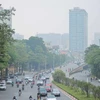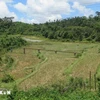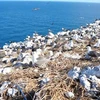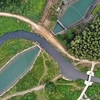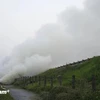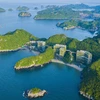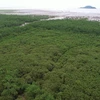Since participating in the Montreal Protocol, Vietnam has achieved remarkable success in gradually limiting the use of substances that deplete the ozone layer. Reports by the Vietnam Economic News.
No longer use of CFC
As many as 195 countries in the world agreed to participate in the Montreal Protocol (Canada) 1994 to eliminate the use of substances that deplete the ozone layer such as CFC (chlorofluorocarbon), HCFC (hydrochlorofluorocarbon) and HFC (hydrofluorocarbon).
These substances are used in cooling mechanism of air-conditioners. Recognising the importance of the elimination of toxic substances, Vietnam joined the protocol in January 1994, and the country's businesses did not use CFC in cosmetics production. In addition, Vietnamese businesses have strictly complied with regulations, contributing to reducing 3.6 tonnes CFC11 in using air-conditioners in the garment and textile sector, 5.8 tonnes CFC12 in using automotive air-conditioners and 40 tonnes CFC in using commercial cooling equipment.
Vietnam has also achieved positive results in excluding the annual consumption of substances that deplete the ozone layer. Together with these achievements, the United Nations Environment Program recognised positive contributions by Vietnam in the implementation of the convention and the protocol.
Achieving target
According to the Montreal Protocol, in 2013, Vietnam is only allowed to consume HCFC at baseline (221.2 tonnes). From October 2015 to the end of 2019, Vietnam must reduce the use of HCFC by 10 percent of baseline. This figure must be reduced by 35 percent from 2020 and the use of HCFC will be completely excluded in 2030. In terms of equipment repairing and maintaining sector, the use of HCFC will be completely excluded in 2040.
The World Bank and the Department of Meteorology, Hydrology and Climate Change under the Ministry of Natural Resources and Environment have completed the adoption of the project on eliminating toxic substances that deplete the ozone layer. The first period of the project was carried out.
According to calculations, Vietnam needed another 20-25 million USD to completely exclude HCFC. Department Deputy Director Nguyen Khac Hieu said that if Vietnam receives the full support in terms of finance and technology from international organisations, the country could completely exclude the use of HCFC in 2025.
Vietnam is calling on people to work together to protect the ozone layer by changing consumer behaviour, such as no longer using air-conditioners, painting houses by brushing or rolling and limiting the use of plastic packaging. Businesses are also urged not to install new equipment that use HCFC.-VNA



